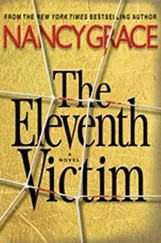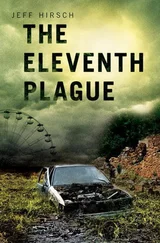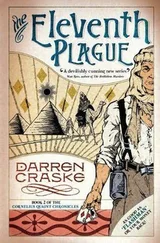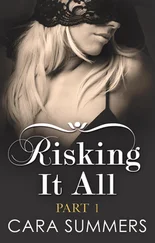Anthony Summers - The Eleventh Day
Здесь есть возможность читать онлайн «Anthony Summers - The Eleventh Day» весь текст электронной книги совершенно бесплатно (целиком полную версию без сокращений). В некоторых случаях можно слушать аудио, скачать через торрент в формате fb2 и присутствует краткое содержание. Жанр: Старинная литература, на английском языке. Описание произведения, (предисловие) а так же отзывы посетителей доступны на портале библиотеки ЛибКат.
- Название:The Eleventh Day
- Автор:
- Жанр:
- Год:неизвестен
- ISBN:нет данных
- Рейтинг книги:3 / 5. Голосов: 1
-
Избранное:Добавить в избранное
- Отзывы:
-
Ваша оценка:
- 60
- 1
- 2
- 3
- 4
- 5
The Eleventh Day: краткое содержание, описание и аннотация
Предлагаем к чтению аннотацию, описание, краткое содержание или предисловие (зависит от того, что написал сам автор книги «The Eleventh Day»). Если вы не нашли необходимую информацию о книге — напишите в комментариях, мы постараемся отыскать её.
The Eleventh Day — читать онлайн бесплатно полную книгу (весь текст) целиком
Ниже представлен текст книги, разбитый по страницам. Система сохранения места последней прочитанной страницы, позволяет с удобством читать онлайн бесплатно книгу «The Eleventh Day», без необходимости каждый раз заново искать на чём Вы остановились. Поставьте закладку, и сможете в любой момент перейти на страницу, на которой закончили чтение.
Интервал:
Закладка:
There was more. Khalifa’s business card was found both in Manila—at the apartment of one of Yousef’s accomplices—and in New York in a suitcase belonging to Blind Sheikh Rahman. One of Khalifa’s aliases—he used several—was found on a document belonging to one of Yousef’s accomplices. He would eventually be named as an unindicted co-conspirator in the 1993 bombing of the World Trade Center.
Inexplicably, there would not be a single reference to Khalifa in the 9/11 Commission report. Congress’s Joint Inquiry report contained just one, characterizing him as the “alleged financier” of the plot to destroy American airliners. Khalifa would never be charged in the United States with any crime.
RAMZI YOUSEF’S phone directory, meanwhile, also threw up a lead, a major clue that, successfully pursued, could perhaps have prevented the 9/11 catastrophe. The directory contained the name and contact information in Pakistan for one “Zahid Sheikh Mohammed,” brother of a man named “Khalid”—both of them uncles to Yousef.
Zahid’s name remains obscure, while Khalid would for years remain a will-o’-the-wisp, a quarry who would not be run to ground until 2003. Today, however, the name of Khalid Sheikh Mohammed sparks instant recognition.
By his own admission, he was the planner and organizer of many attacks—including 9/11. U.S. investigators have long since dubbed him, simply, KSM.
The information on Ramzi Yousef’s computer implicated KSM in the Manila conspiracies and started the hunt for him. Investigators hurried to Zahid’s home in Pakistan, to find photographs of bin Laden but no sign of either Mohammed brother. Clues proliferated, however, and much later—in captivity—he would fill in missing parts of the jigsaw.
Some of the many phone calls Yousef had made from New York, while planning the 1993 Trade Center bombing, had been to KSM. They had discussed procedures for mixing explosives on the calls, and the older man helped at least once by wiring his nephew money.
In Manila in 1994, KSM was at very least Yousef’s senior accomplice, perhaps the plot’s driving force. While Yousef found modest lodgings, KSM took a condominium at Tiffany Mansions, a rather grand address in an affluent part of town. Perhaps as part of their cover, perhaps by inclination, neither man lived the kind of life required of Islamic fundamentalists.
Some of the detail on the Philippines episode comes from the bar girls and dancers with whom uncle and nephew whiled away their nights—and whom they found useful. KSM bribed one of the girls to open a bank account and to purchase a sophisticated mobile phone. The account and the phone were in her name but for his use, ideal for shady financial transactions and unmonitored communication.
To Abdul Murad, the accomplice seized the night police raided the Manila bomb factory, KSM was “Abdul Majid”—one of his thirty-some aliases. Murad had met him once before in Pakistan, when Yousef was recovering from an injury incurred while handling explosives. Then, Yousef had told him “Majid” was a Saudi in the “electronics business.” His uncle was in fact Kuwaiti-born and in the terrorism business.
In Manila, as final preparations were made to down U.S. airliners, KSM came repeatedly to the bomb factory. With chemicals and electronic components scattered in plain sight, Murad was to say that Mohammed “must have known that something was planned.” “I was responsible,” KSM would one day tell a U.S. military tribunal, “for the planning and surveying needed to execute the Bojinka Operation.”
KSM was to tell the CIA that he thought of something else in Manila, a concept radically different from exploding bombs on airliners—the “idea of using planes as missiles.” One potential target he and Yousef considered at that time was the CIA headquarters in Virginia. Another was the World Trade Center.
What KSM had to say on that, an indication that flying planes into buildings was under discussion long, long before 9/11, is on its own merely interesting. What sparked lasting controversy, though, is the suggestion that U.S. authorities learned early on what the plotters had in mind—and dropped the ball.
A Philippines police document cites Yousef’s accomplice Murad as saying that they discussed a “plan to dive-crash a commercial aircraft at the CIA headquarters in Virginia.… What the subject has in his mind is that he will board any American commercial aircraft, pretending to be an ordinary passenger. Then he will hijack said aircraft, control its cockpit and dive it at the CIA headquarters.”
No suggestion there that the terrorists discussed targets other than the CIA. One of the Philippines police officers who interrogated Murad, however, has claimed otherwise. Colonel Rodolfo Mendoza told CNN that there was also talk of crashing a plane into the Pentagon. The Philippines presidential spokesman, Rigoberto Tiglao, went much further.
“The targets they listed,” he said in 2001, “were CIA headquarters, the Pentagon, TransAmerica [the TransAmerica Tower, in San Francisco], Sears [the Sears Tower, in Chicago], and the World Trade Center.”
Most credible, perhaps, is apparent corroboration from a source who does not cite Murad, whose statements were obtained under torture. Rafael Garcia, the Filipino computer analyst who examined Yousef’s computer, recalls having discovered notes of a plan that called for crashing airliners into “selected targets in the United States.” These included: “the CIA headquarters in Langley, Virginia; the World Trade Center in New York; the Sears Tower in Chicago; the TransAmerica Tower in San Francisco; and the White House in Washington DC.”
The 9/11 Commission Report, which quoted none of these statements verbatim, consigned them to an obscure footnote and referred to them as mere “claims.” Its investigation, it stated, found no indication that such information “was written down or disseminated within the U.S. government.”
Congress’s Joint Inquiry Report, however, said the FBI and the CIA did learn what Murad had said about a plan to crash a plane into CIA headquarters. The FBI, the report stated, later “effectively forgot all about it … ignored this early warning sign that terrorists had begun planning to crash aircraft into symbols of American power.”
The Philippines National Police intelligence chief, Robert Delfin, said, “We shared that with the FBI. They may have mislooked [ sic ], and didn’t appreciate the info coming from the Philippines police.… I believe there was a lapse.”
Colonel Mendoza, who said he personally questioned Murad, insisted that he briefed the U.S. embassy on everything Murad told him. Another lead investigator on the Manila episode, police Colonel—later General—Avelino Razon, immediately called a press conference when news broke of 9/11. “We told the Americans about the plans to turn planes into flying bombs as far back as 1995,” he said. “Why didn’t they pay attention?”
Last word to Inspector Fariscal, the officer who discovered Ramzi Yousef’s bomb factory. “I still don’t understand,” she said after 9/11, “how it could have been allowed to happen.… The FBI knew all about Yousef’s plans.… They’d seen the files.… The CIA had access to everything, too.… This should never have been allowed to happen.”
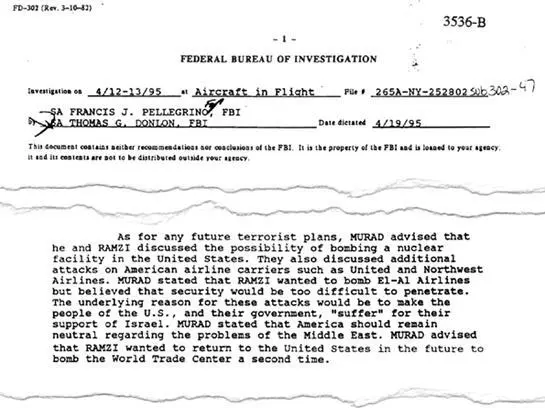
Prisoner Murad said his principal accomplice planned a second attack on the World Trade Center—as early as 1995
.
AFTER THE WORLD TRADE CENTER bombing of 1993, well before the Philippines police discovered the Manila bomb factory, the U.S. Defense Department convened a panel to report on how vulnerable the nation might be to terrorism. Presciently, the group discussed the possibility of an airliner being deliberately flown into a public building.
Читать дальшеИнтервал:
Закладка:
Похожие книги на «The Eleventh Day»
Представляем Вашему вниманию похожие книги на «The Eleventh Day» списком для выбора. Мы отобрали схожую по названию и смыслу литературу в надежде предоставить читателям больше вариантов отыскать новые, интересные, ещё непрочитанные произведения.
Обсуждение, отзывы о книге «The Eleventh Day» и просто собственные мнения читателей. Оставьте ваши комментарии, напишите, что Вы думаете о произведении, его смысле или главных героях. Укажите что конкретно понравилось, а что нет, и почему Вы так считаете.

